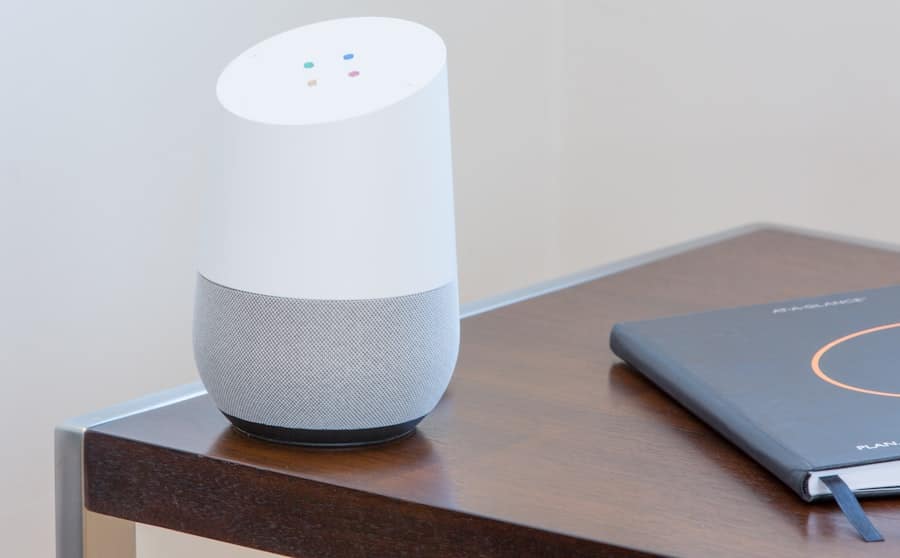Ultra-Wideband (UWB) technology has emerged as a significant player in the realm of wireless communication, characterized by its ability to transmit data over a wide frequency spectrum. Unlike traditional narrowband systems that operate within a limited frequency range, UWB utilizes a bandwidth greater than 500 MHz or a fractional bandwidth of at least 20%. This unique characteristic allows UWB to achieve high data rates and precise location tracking capabilities, making it an attractive option for various applications, particularly in the Internet of Things (IoT) landscape.
The technology operates by sending short pulses of radio waves, which can penetrate obstacles and provide reliable communication even in challenging environments. The development of UWB technology has been accelerated by advancements in semiconductor technology and the increasing demand for high-speed wireless communication. The Federal Communications Commission (FCC) in the United States officially allocated UWB frequencies for commercial use in 2002, paving the way for its integration into consumer electronics and industrial applications.
As IoT devices proliferate, the need for efficient, high-performance communication protocols becomes paramount. UWB stands out due to its low power consumption, high precision, and ability to coexist with other wireless technologies, positioning it as a key enabler for the next generation of connected devices.
Key Takeaways
- Ultra-Wideband (UWB) technology is a wireless communication technology that uses a large portion of the radio spectrum to transmit data over short distances.
- UWB has a significant impact on IoT applications by enabling precise and accurate location tracking, real-time data transmission, and energy-efficient communication.
- The advantages of UWB in IoT include high accuracy in location tracking, low power consumption, and the ability to coexist with other wireless technologies.
- UWB plays a crucial role in location tracking and positioning in IoT applications, providing centimeter-level accuracy and reliable indoor and outdoor positioning.
- UWB contributes to real-time data transmission in IoT by enabling high data rates, low latency, and reliable communication, making it suitable for applications such as asset tracking and industrial automation.
- UWB influences energy efficiency in IoT devices by enabling low-power communication, extended battery life, and reduced interference with other wireless technologies.
- Despite its advantages, UWB in IoT faces challenges and limitations such as regulatory restrictions, interoperability issues, and cost considerations.
- The future outlook for UWB in IoT applications is promising, with potential advancements in standardization, integration with other technologies, and the development of new use cases in various industries.
UWB’s Impact on IoT Applications
The integration of UWB technology into IoT applications has revolutionized how devices communicate and interact with one another. One of the most notable impacts is seen in smart home environments, where UWB enables seamless connectivity between various devices such as smart locks, lighting systems, and security cameras. For instance, a UWB-enabled smart lock can accurately determine the proximity of a user’s smartphone, allowing for keyless entry without the need for manual input.
This level of interaction enhances user convenience while also improving security measures through precise location awareness. Moreover, UWB’s capabilities extend beyond residential applications into industrial settings. In manufacturing environments, UWB can facilitate real-time asset tracking and management.
For example, a factory equipped with UWB technology can monitor the location of tools and machinery with remarkable accuracy, reducing downtime and improving operational efficiency. This capability is particularly beneficial in large warehouses where traditional tracking methods may falter due to signal interference or obstructions. By providing precise location data, UWB enhances inventory management and streamlines logistics processes.
Advantages of UWB in IoT
UWB technology offers several advantages that make it particularly well-suited for IoT applications. One of the most significant benefits is its high data transmission rates. UWB can achieve data rates exceeding 1 Gbps, which is crucial for applications requiring rapid data exchange, such as video streaming or real-time sensor data transmission.
This capability allows IoT devices to communicate more effectively, enabling richer user experiences and more sophisticated functionalities. Another advantage of UWB is its exceptional accuracy in location tracking.
This level of precision is invaluable in various scenarios, such as indoor navigation systems or asset tracking in complex environments. For instance, hospitals can utilize UWB to track the location of medical equipment or personnel, ensuring that critical resources are readily available when needed. The ability to pinpoint locations accurately not only enhances operational efficiency but also improves safety and response times in emergency situations.
UWB’s Role in Location Tracking and Positioning
Location tracking and positioning are among the most compelling applications of UWB technology. The ability to determine the precise location of devices opens up a myriad of possibilities across different sectors. In retail environments, for example, UWB can be employed to enhance customer experiences by providing personalized promotions based on their location within a store.
By integrating UWB with mobile applications, retailers can send targeted offers to customers as they approach specific product displays, thereby increasing engagement and sales. In addition to retail, UWB’s role in location tracking is critical in logistics and supply chain management. Companies can implement UWB systems to monitor the movement of goods throughout warehouses and distribution centers.
By equipping pallets or containers with UWB tags, businesses can gain real-time visibility into their inventory levels and locations. This capability not only reduces the risk of lost items but also optimizes storage space and improves overall supply chain efficiency. The precision offered by UWB allows for better planning and execution of logistics operations, ultimately leading to cost savings and enhanced customer satisfaction.
UWB’s Contribution to Real-Time Data Transmission
Real-time data transmission is essential for many IoT applications, particularly those that require immediate feedback or action based on sensor inputs. UWB technology excels in this area due to its ability to transmit large amounts of data quickly while maintaining low latency. For instance, in smart transportation systems, vehicles equipped with UWB can communicate with each other and with infrastructure elements such as traffic lights or road sensors in real time.
This capability enables dynamic traffic management solutions that can adapt to changing conditions, improving traffic flow and reducing congestion. Furthermore, UWB’s robustness against interference makes it an ideal choice for environments where multiple wireless signals coexist. In urban settings filled with various wireless devices, traditional communication protocols may struggle with signal degradation or loss.
However, UWB’s wide bandwidth allows it to operate effectively even in crowded frequency spaces. This resilience ensures that critical data can be transmitted reliably without delays or interruptions, which is particularly important in applications such as remote healthcare monitoring or industrial automation where timely information is crucial for decision-making.
UWB’s Influence on Energy Efficiency in IoT Devices
Energy efficiency is a paramount concern in the design and deployment of IoT devices, especially as many of these devices rely on battery power for operation. UWB technology contributes significantly to energy efficiency through its low power consumption characteristics. Unlike other wireless communication technologies that may require continuous power for maintaining connections, UWB operates using short bursts of energy during data transmission.
This approach minimizes energy usage while still delivering high performance. For example, wearable health monitoring devices that utilize UWB can transmit vital signs data intermittently rather than continuously streaming information. This intermittent communication reduces battery drain and extends the operational life of the device between charges.
As a result, users benefit from longer-lasting devices that require less frequent recharging, enhancing overall user experience and convenience. Additionally, energy-efficient designs contribute to sustainability efforts by reducing electronic waste associated with short-lived batteries.
Challenges and Limitations of UWB in IoT
Despite its numerous advantages, Ultra-Wideband technology faces several challenges and limitations that must be addressed for broader adoption in IoT applications. One significant challenge is regulatory compliance; while the FCC has allocated specific frequency bands for UWB use in the United States, other countries may have different regulations governing its deployment. This inconsistency can hinder global interoperability and complicate the development of universal standards for UWB devices.
Another limitation lies in the range of UWB signals compared to other wireless technologies like Wi-Fi or cellular networks.
This limitation poses challenges for applications requiring extensive coverage areas or long-range connectivity.
As a result, developers must carefully consider the deployment environment when integrating UWB into their IoT solutions.
Future Outlook for UWB in IoT Applications
The future outlook for Ultra-Wideband technology within IoT applications appears promising as advancements continue to unfold across various sectors. As industries increasingly recognize the benefits of precise location tracking and high-speed data transmission, demand for UWB-enabled devices is expected to grow significantly. Innovations in semiconductor technology are likely to lead to more compact and cost-effective UWB solutions, making them accessible for a wider range of applications.
Moreover, as smart cities evolve and the need for interconnected systems increases, UWB’s role will become even more critical. The technology’s ability to facilitate real-time communication between devices will be essential for managing urban infrastructure efficiently—ranging from traffic systems to public safety initiatives. As developers work towards overcoming existing challenges related to range and regulatory compliance, we can anticipate a future where UWB becomes a standard feature in many IoT ecosystems, driving innovation and enhancing connectivity across diverse applications.
If you are interested in exploring the latest technologies in the tech industry, you may also want to check out this article on TechRepublic helping IT decision-makers identify technologies. This article provides valuable insights into how IT professionals can stay ahead of the curve and make informed decisions about the technologies they choose to implement. It complements the discussion on the role of Ultra-Wideband (UWB) in IoT applications by highlighting the importance of staying informed about emerging technologies in the industry.
FAQs
What is Ultra-Wideband (UWB)?
Ultra-Wideband (UWB) is a wireless communication technology that uses a large portion of the radio spectrum to transmit data over short distances with low power consumption.
What are the key features of UWB?
UWB technology offers high data transfer rates, precise indoor and outdoor positioning capabilities, low power consumption, and the ability to operate in crowded radio frequency environments.
How does UWB contribute to IoT applications?
UWB enables accurate and reliable location tracking, object detection, and secure communication in IoT devices. It can be used in smart home automation, asset tracking, industrial IoT, healthcare monitoring, and other applications.
What are the advantages of using UWB in IoT applications?
UWB provides centimeter-level positioning accuracy, low interference with other wireless technologies, low power consumption, and high data transfer rates, making it suitable for a wide range of IoT applications.
What are some examples of UWB-enabled IoT devices?
UWB technology is used in smart locks, key finders, asset tracking tags, wearable health monitors, industrial equipment monitoring systems, and other IoT devices that require precise location tracking and secure communication.



